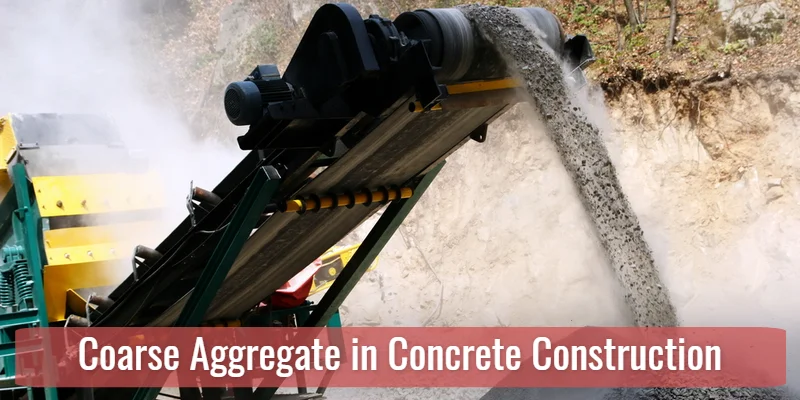Coarse Aggregate in Concrete Construction
COARSE AGGREGATE
Coarse aggregates refer to irregular and granular materials such as sand, gravel, or crushed stone, and are used for making concrete. In most cases, Coarse is naturally occurring and can be obtained by blasting quarries or crushing them by hand or crushers. It is imperative to wash them before using them for producing concrete. Their angularity and strength affect the concrete in numerous ways. Needless to say, the selection of these aggregates is a very important process.
Size of Coarse Aggregate
Materials that are large enough to be retained on the 4.7mm sieve size usually constitute coarse aggregates and can reach a maximum size of 63mm.
The size of coarse aggregates affects several aspects of the concrete, mainly strength and workability, and the amount of water needed for the concrete mix. It also helps determine how much fine aggregate is needed to produce a concrete batch. The bigger the size, the smaller is its bondable surface area for cement, sand and water; the less water and fine aggregate is needed with concrete mixes.
The size of the coarse aggregate determines the cement to water ratio
Less water means a stronger mix, but it also becomes less workable. One important factor is the space between TMT Bars. The aggregate needs to be smaller than the space between internal reinforcements. This will allow the aggregate to pass between the rebar and settle evenly throughout the structure.
Grading of Coarse Aggregate
The grading of aggregate is its classification according to the average size of the particles. It is important that the grading is kept constant for concrete batches. The aggregate particles need to be of a consistent size for an even grading. Similar shaped coarse aggregates make the concrete more cohesive and uniform.
Shape of Coarse Aggregate
The characteristic of the parent rock from which coarse aggregates is produced and also the type of crusher used to influence the shape of the aggregates. They may be round, angular or completely irregular. Rounded aggregates, such as gravel, have the lowest water demand due to their lower surface area. They also have the lowest cement requirement. This makes rounded aggregates more economical; however, the bonds they form are not as strong as those of angular aggregate.
Angular ones require more water and cement because they have a higher surface area. This can make a concrete batch more expensive, but it is also stronger and more durable. Irregularly-shaped aggregates have similar properties to angular aggregates, but if the particles are too flaky or elongated, it can result in segregation in the concrete.
Strength of Coarse Aggregate
The strength of the actual material will determine the final strength of the concrete mix. Some rocks and stones are stronger than others thus, giving higher resistance to cracking and crushing. Granite, for example, is far stronger than limestone. Therefore, it is a common aggregate used by contractors.
Water absorption of Coarse Aggregate
Aggregate absorption is the water it soaks up in the concrete batch. Dry aggregates suck up any water in the concrete, which can lead to a dry and brittle mix. That is why contractors keep their aggregates damp before mixing a batch of concrete. Coarse aggregates can absorb water up to five percent of their weight. This means that contractors need to add extra water to a concrete mix if the aggregate is dry.
These properties determine the final quality and strength of a concrete batch. The size, grading, shape, strength and water absorption of the aggregate all influence the final concrete mix in various ways, so contractors need to keep an eye on these variables.
The properties of coarse aggregate will determine the final quality and strength of a concrete batch. The size, grading, shape, strength and water absorption of the aggregate all influence the final concrete mix in various ways, so contractors need to keep an eye on these variables.

